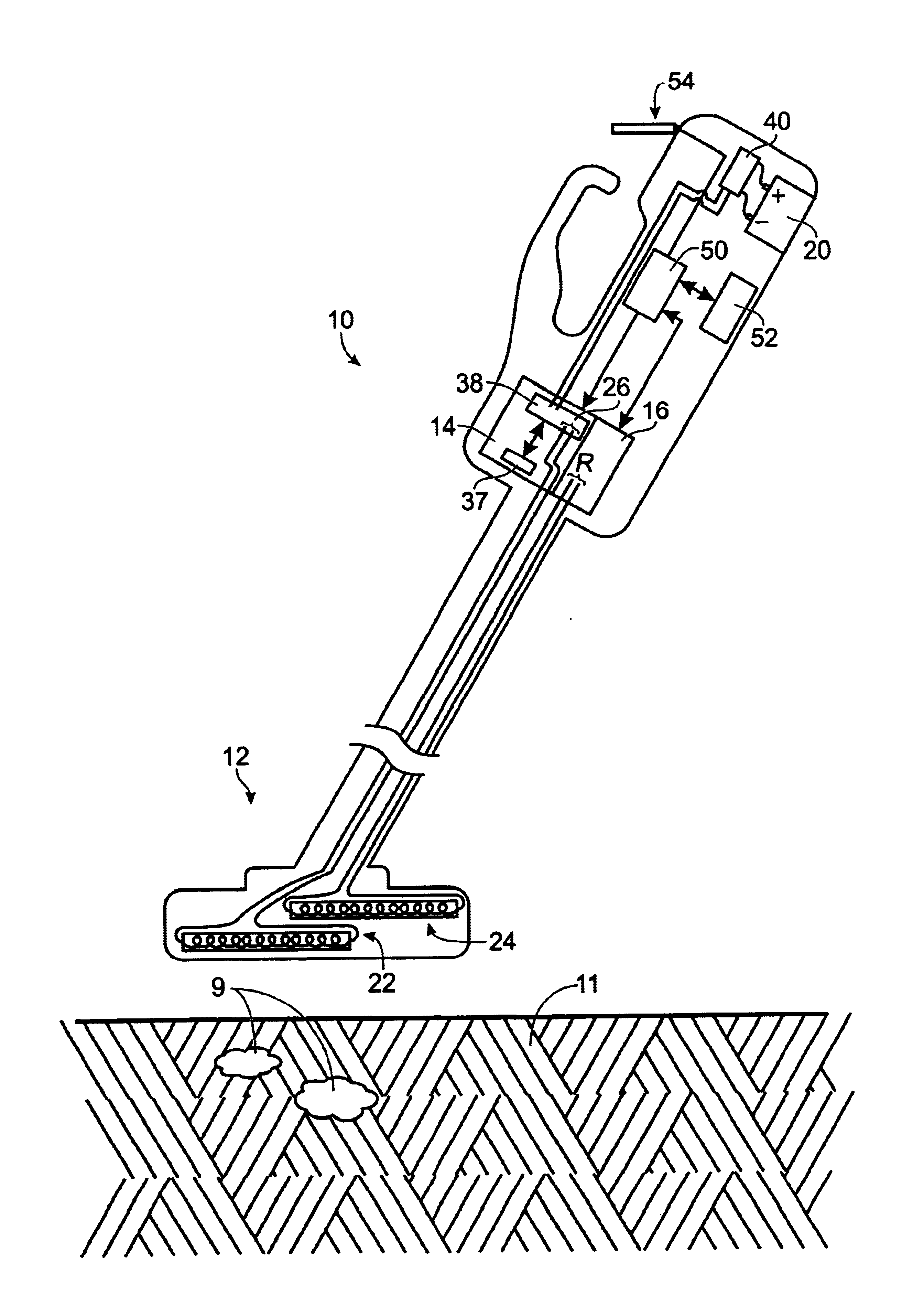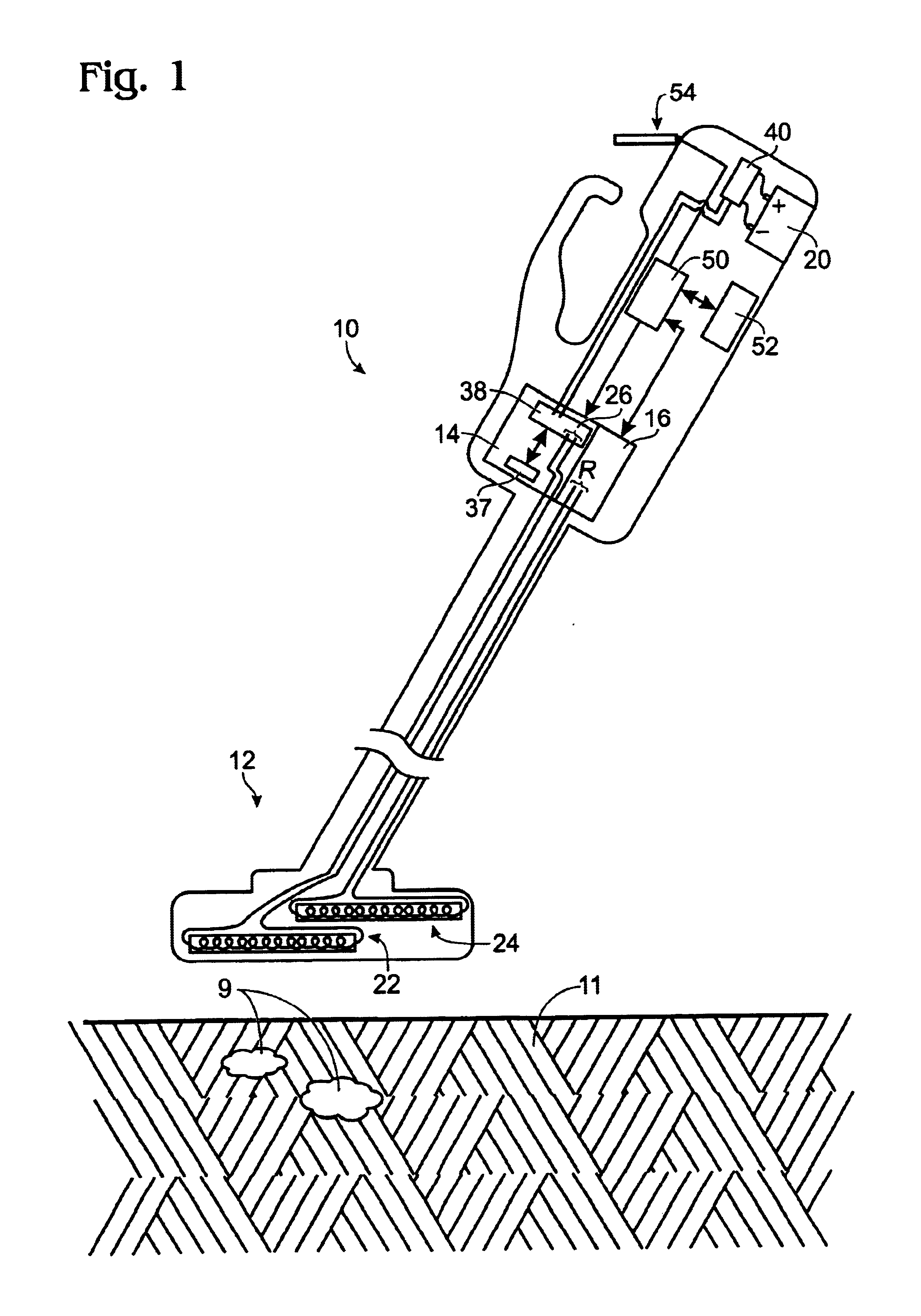Metal detector employing static discrimination
a metal detector and static discrimination technology, applied in the field of metal detectors, can solve the problems of significant error introduced by rotation, severe compromise of method performance, and other attempts at dual frequency discrimination have not been successful, so as to improve the discrimination between metal objects and ground.
- Summary
- Abstract
- Description
- Claims
- Application Information
AI Technical Summary
Benefits of technology
Problems solved by technology
Method used
Image
Examples
Embodiment Construction
[0031]Referring to FIG. 1, a metal detector 10 is shown. The metal detector 10 is particularly adapted for hand-held use, such as by hobbyists, however, this is not essential to the context of the present invention. The detector is used to search for metal objects 9 in a target volume 11 that is typically ground but may be any volume. Since the detector is typically used outdoors to search for metal objects away from independent sources of power, the detector typically incorporates a battery 20 to power the detector, though the detector 10 may be used with any power source.
[0032]The metal detector 10 includes an interrogating portion, a receiving portion, and a processing portion. The interrogating and receiving portion share a search head 12. The interrogating portion comprises a signal generator 14 and the receiving portion comprises a sampling circuit 16. The search head is maintained in close proximity with the ground 11. The signal generator 14 generates interrogating signals f...
PUM
| Property | Measurement | Unit |
|---|---|---|
| frequency | aaaaa | aaaaa |
| frequencies | aaaaa | aaaaa |
| frequency | aaaaa | aaaaa |
Abstract
Description
Claims
Application Information
 Login to View More
Login to View More - R&D
- Intellectual Property
- Life Sciences
- Materials
- Tech Scout
- Unparalleled Data Quality
- Higher Quality Content
- 60% Fewer Hallucinations
Browse by: Latest US Patents, China's latest patents, Technical Efficacy Thesaurus, Application Domain, Technology Topic, Popular Technical Reports.
© 2025 PatSnap. All rights reserved.Legal|Privacy policy|Modern Slavery Act Transparency Statement|Sitemap|About US| Contact US: help@patsnap.com



